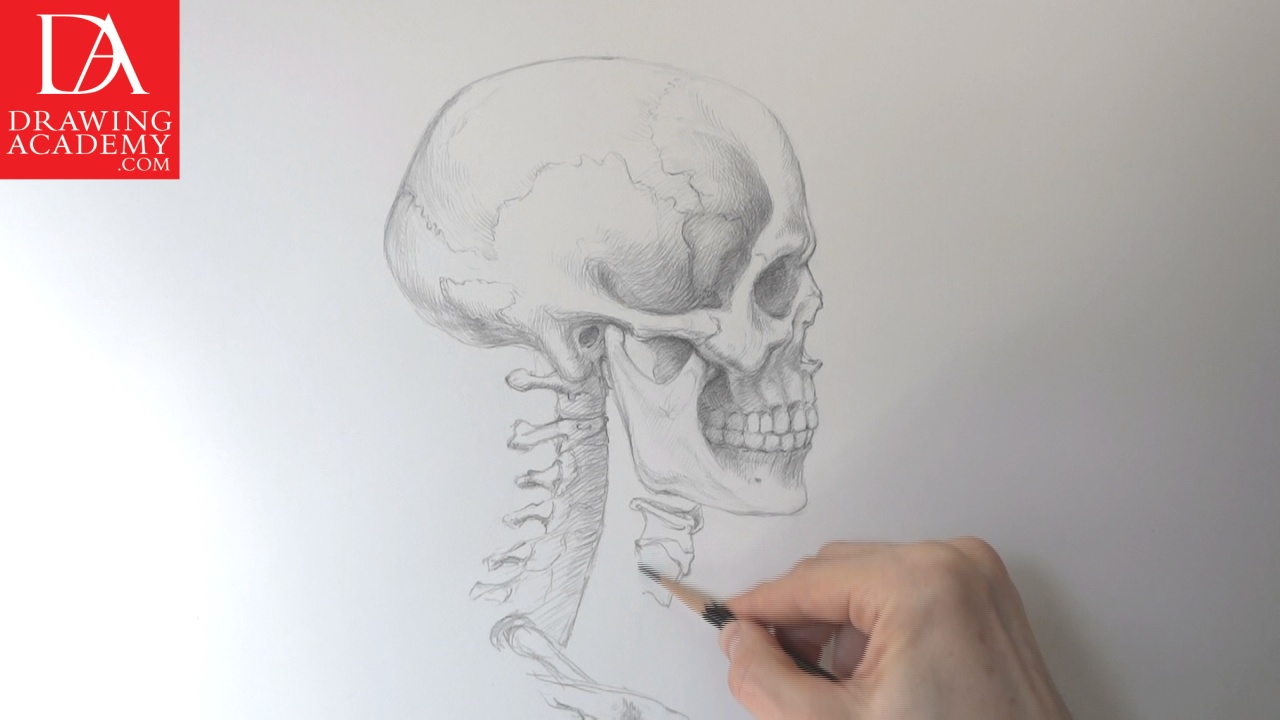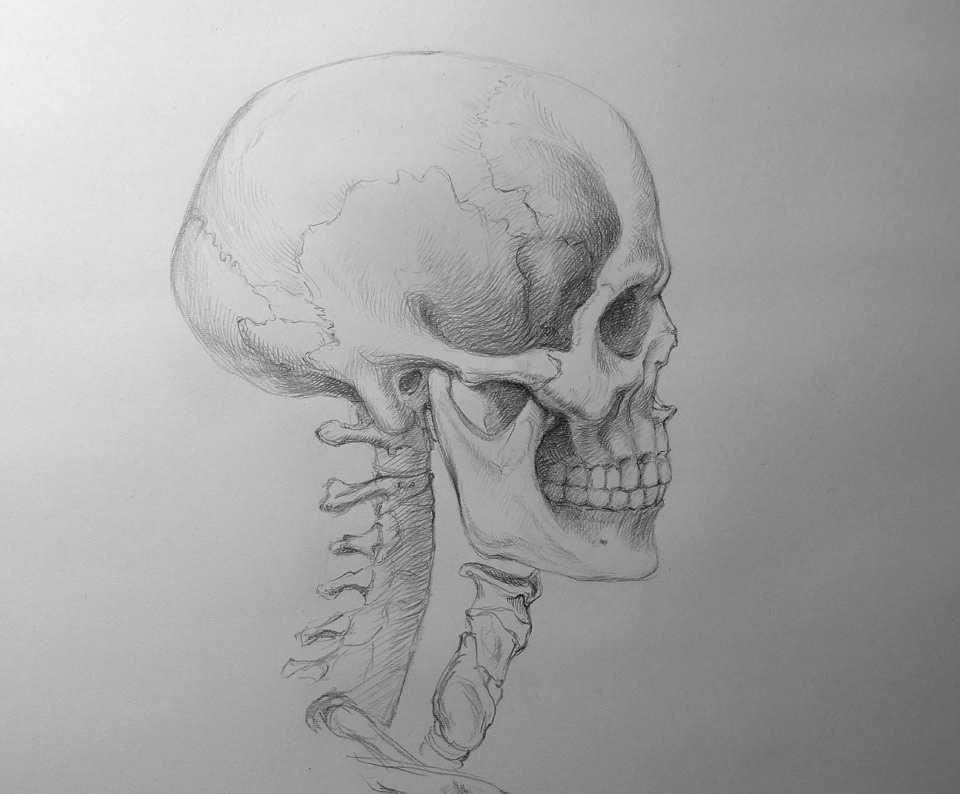How to Draw a Skull – Human skull bones and construction
In this video lesson, you will discover How to Draw a Skull and human head muscles.
Enroll in the Drawing Academy Course
Pay once - Enjoy forever!
Only $297
How to Draw a Skull – The anatomy of a human head
The anatomy of the human head is quite an important subject if you want to master portrait drawing skills. The knowledge of How to Draw a Skull is essential for the fine artist to produce realistic and believable portraits.
A skull always captivates the minds of fine artists. We can find images of skulls from the very early in the history of art. Somehow, this object has found its significance in fine art as a representation of human mortality. Many cultures attach various meanings and symbolism to this part of the human skeleton. Some believed that it embodies the human spirit and energy; others were using it as a memento mori symbol – a reminder of death. During Renaissance time, still-live paintings sometimes featured a skull; it was depicted among luxury and expensive objects to convey the vanity of affection to earthly possessions.

In this “How to Draw a Skull” video part, I will make a profile view drawing of a skull and explain its main bones and parts.
The whole appearance of a human head very much depends on the shape of its skull. Skull bones not only shape the head and influence the appearance of the face, but also serve as a base for the head’s muscles.
When it comes to the question of How to Draw a Skull, keep in mind that there are 22 bones in the skull. This number excludes the teeth and minute bones of the inner ear, which are called, ossicles. Out of the 22 bones, only one bone is movable, it is the lower jawbone, called the mandible. All the other bones are connected by immovable joints.

The How to Draw a Skull topic is also important because the shape of the skull bones contributes the most to the individual look of a person’s head. Muscles also influence individual appearance but to a lesser degree.
The fine artist must understand what bones lay underneath the skin of the head and how these bones influence the head’s appearance in order to draw realistic portraits.
In the How to Draw a Skull video lesson I will explain how bones of the skull can be divided into two groups – the bones of the cranium and the facial bones.
Let’s begin with the cranium bones. The main bones are:
• Frontal bone
• Parietal bone
• Temporal bone
• Occipital bone
• Sphenoid bone
• Ethmoid bone
These cranium bones form the protective case for the brain. This case has two main parts – the cranial vault, which protects the top and the sides of the brain; and the cranium base, which protects the brain’s under-plane.
There are also other features of the cranium of which you need to be aware. Here is the temporal fossa, which is a shallow depression on the side of the skull. It is outlined by the superior temporal line and terminates below the level of the zygomatic arch.
The mastoid process is a protrusion at the base of the skull to which several neck muscles are attached.
The external auditory meatus (or canal) is an opening in the skull which sound passes through on its way into the inner ear.
In the “How to Draw a Skull” video lesson you will discover the following bones of the face:
• Nasal bone
• Lacrimal bone
• Zygomatic bone
• Maxilla (or upper jawbone)
• Vomer bone
• Inferior nasal concha
• Mandible
As I mentioned before, the mandible, or lower jawbone is the only movable bone of the skull. It is also the strongest and biggest bone of the face.
The main parts of the mandible are:
• Body of mandible
• Angle of mandible
• Mental tubercle
• Mental protuberance
• Inferior dental arch
• Ramus
• Coronoid process
• Condylar process
Other facial features include:
• Orbit (or eye socket)
• Nasion (or root of nose)
• The upper dental arch
• The nasal cavity
• Zygomatic arch
The zygomatic arch consists of two bones – zygomatic bone, which is part of the facial bones and zygomatic process of temporal bone, which belongs to the cranium bones group.
The cheekbone approximately aligns with the base of the nose.
The neck bones consist of seven cervical vertebrae, which are stacked on top of each other. The top one is called the atlas, and second is called the axis. Other cervical vertebrae are just numbered three to seven. The seventh cervical vertebra has a longer spinous process, which can be seen on the back of the neck.
In the next video part, we will examine the skull muscles.




